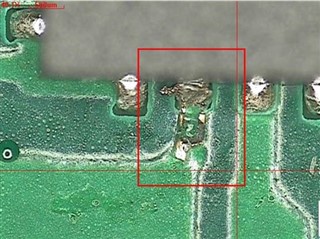Other Parts Discussed in Thread: BQ40Z50-R2
To whom it may concern:
We are using BQ25792 for a battery with build-in charger. During short circuit test, 2 samples were failed:
1. Both samples had melt copper on SYS pin of BQ25792.

2. The BQ25792 IC was broken on one of the samples.
Could you help to check this issue, and help us to understand this issue better?
1. SYS pin is narrow, and the copper connected to it must be thin. Maybe increase the copper thickness?
2. What is max current the IC can handle from BAT to SYS pin?
Thank you!
Chen Jia



